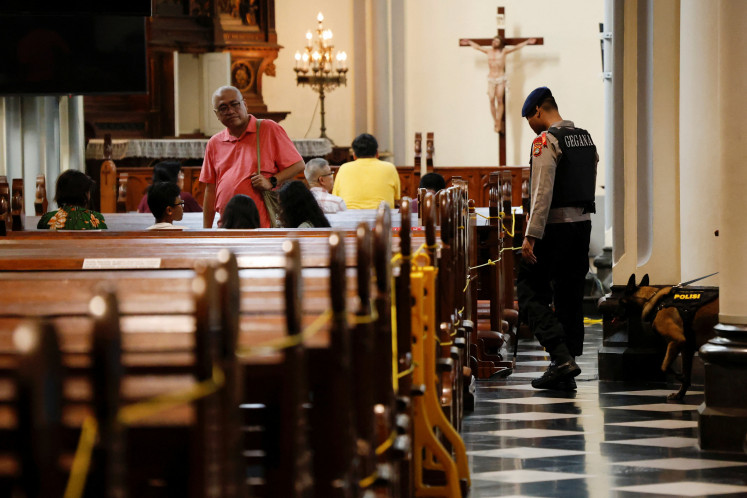Popular Reads
Top Results
Can't find what you're looking for?
View all search resultsPopular Reads
Top Results
Can't find what you're looking for?
View all search resultsHow related is the niqab to radicalism?
Regardless of such interpretations, if the government wants to ban the niqab, where should we draw the line on religious freedom, especially for Muslim women who regard the niqab as a religious obligation?
Change text size
Gift Premium Articles
to Anyone
T
here is little difference between the recent plan by new Religious Affairs Minister Fachrul Razi to recommend banning the niqab (full-faced veil) in government offices and last year’s cancelled niqab ban for students of Sunan Kalijaga State Islamic University (UIN) in Yogyakarta.
The minister’s explicit justification was one of security; the UIN rector cited the face as a primary identity marker. But implicitly, both had the same underlying assumption: The niqab or cadar signifies an embrace of radicalism. Although it’s ill-defined, the term radicalism here simply means the ideology that attempts to change the Indonesian republic into an Islamic state.
However, there is only a thin connection between wearing the niqab and radicalism. While there is no denying that women who — or whose husbands — conducted terror attacks over the past few years wore the niqab, most women who can be categorized in the group that wants to establish an Islamic state or caliphate do not wear such veils.
Most women affiliated with the banned Hizbut Tahrir Indonesia (HTI), which explicitly aims to establish a caliphate in the country, do not wear the niqab. In fact, there are more niqab-wearing women in puritanical Salafi circles than those in HTI. Salafi groups are not monolithic.
They include those who stress individual piety and therefore do not espouse an outspoken political stance. Some go to the extent of banning members from anti government rallies because, for them, such demonstrations are heretical.
On the other hand, there are women who study in pesantren (Islamic boarding schools) affiliated with Indonesia’s largest Islamic organization Nahdlatul Ulama (NU) who wear niqab when going out of their schools. One of their most cited reasons is that, according to mainstream classical Islamic jurists subscribing to the Shafi’i school, the fiqh (Islamic jurisprudence) school followed by most traditionalist Muslims in Indonesia, women’s aurat (body parts that are religiously required to be covered) consist of their whole body.
This means the obligated dress is the burqa, which covers the eyes.

















